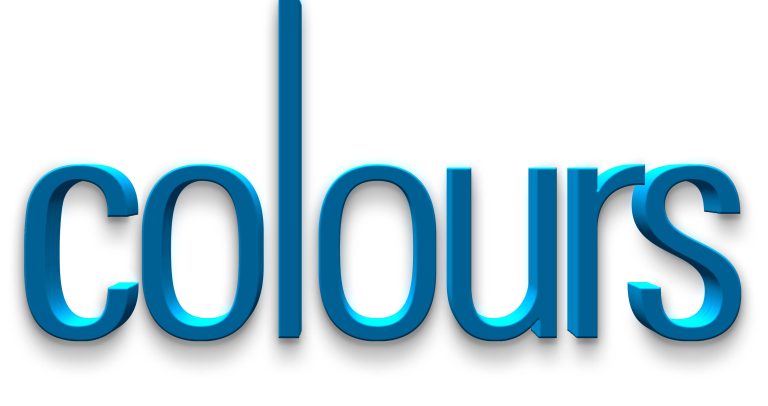In this week after the demise of Steve Jobs, a great many articles have appeared in tribute to the co-founder of Apple. The following (based on musings by Gene Gable, who writes for CreativePro.com) gives a graphic designer’s point of view of the man and the company.
[divider_padding]
[one_half]
[image width=”300″ height=”454″]/wp-content/uploads/2011/10/Steve_Jobs_by_Ryan_Katsanes.jpg[/image]
[/one_half]
[one_half_last]
Many people more qualified than me are writing tributes to Steve Jobs and indeed, I barely know what to say. Mostly I find it sad that four kids have lost their father at too early an age, and that no matter your success and resources, sometimes life takes a bad turn.
Those of us in the graphic arts industry go back with Apple a long way. Many of you likely have stories about your first Mac in the mid- to late Eighties when it was still a struggle to get out decent work, but when the writing was on the wall that this was the future of graphic design, typesetting, and layout.
Of course, Apple went on to capture the music market, mobile cell phone market, and lately the e-publishing market. But those of us in graphic arts will always feel like we were there first. And for that we have Steve Jobs to thank. May he rest in peace.
Photo by Ryan Katsanes, 2011
[/one_half_last]
[divider_padding]
[one_half]
Of course, a lot of things go into building a successful brand, and Apple has done many of them right, and a few of them extraordinarily right. Clearly brand image is closely related to graphic style, which Apple has in abundance.
As these ads and product collateral from the Apple 1 circa 1976 reveal, the company was anything but graphically slick in the early days.
The early material out of Apple looks much like the computers did in those days: homemade. The first Apple logo pictures Sir Isaac Newton sitting under a tree along with a quote from Wordsworth: “Newton… ‘A Mind Forever Voyaging Through Strange Seas of Thought … Alone.'” It was designed by Ronald Wayne, one of the three original partners (along with Jobs and Wozniack) in Apple Computer.
Wayne, who owned 10 percent of Apple’s stock, bailed out of the company after only two weeks, selling his stock back for a one-time payment of $800. Nearly all of the original 200 Apple computers were sold through The Byte Shop, a computer store in the San Francisco Bay Area.
[/one_half]
[one_half_last]
[image width=”300″ height=”336″]/wp-content/uploads/2011/10/Figure_01.jpg[/image]
A very early 1976 advertisement for the Apple I computer along with the original Apple logo. Two hundred Apple I computers were manufactured and sold for $666.66 each. All but twenty-five of them sold in the first 10 months.
[/one_half_last]
[one_half]
[image width=”300″ height=”399″]/wp-content/uploads/2011/10/Figure_06.jpg[/image]
By the time the Apple II rolled out at the first West Coast Computer Fair in 1977, Apple had hired a professional agency to design collateral. The first ad for the Apple II introduced the world to a more sophisticated Apple style, even if the gender roles seem rather anti-Apple by today’s standards.
[/one_half]
[one_half_last]
Next up for the new company was a trip to the first West Coast Computer Faire in April 1977 for the introduction of the Apple II. Armed with a new partner and some much-needed cash, the company scrambled to make a good impression at the show. Jobs particularly felt that the company logo was a deterrent to sales and wanted something new.
In early 1977 Wozniack and Jobs were introduced to the Regis McKenna ad agency, eventually hiring them to help with the April rollout. Apparently, after the first meeting with Jobs and Wozniack, the head of the agency at the time said he wanted nothing to do with these “kids” but agreed to let a young account executive named Bill Kelley take the account.
Among other things, Regis McKenna designed a new logo for Apple, which Jobs wanted to be colorful: the Apple II was one of the first computers to support color graphics. A designer at the agency, Rob Janoff, sketched out the first rainbow-colored apple.
According to Kelley, Janoff originally wanted small lines between the color bars so it would be easier to reproduce on presses with poor registration, but Jobs vetoed that idea. And Jobs ended up specifying several of the colors.
[/one_half_last]
Things really started to get interesting in 1984 when Apple released the Macintosh to much fanfare. Perhaps the most memorable advertising event in the company’s history was the famous Apple Superbowl ad. Less successful was the Lisa (pictured below left, with an early Mac) and even less successful and rarely even remembered, was the Apple III.
[one_half][image width=”300″ height=”198″]/wp-content/uploads/2011/10/Early_Apples.jpg[/image] [/one_half]
[one_half_last][image width=”300″ height=”198″]/wp-content/uploads/2011/10/Seybold.jpg[/image] [/one_half_last]
The pivotal moment for the graphic arts industry came when Jonathan Seybold put the founders of Adobe, John Warnock and Chuck Geschke, together with Steve Jobs. When Adobe’s Postscript met the Mac and the first Apple Laserwriter printer, it made it possible to compose high-quality pages. (Above, right – Steve with Geschke and Warnock).
The rest, as they say, is history. When the photos below were taken at Seybold Seminars in 1999, Apple was releasing the G4 Macintosh, the first desktop “super computer,” along with the giant cinema screen. Graphic designers, videographers, and other power users were fully on board with the Macintosh, which had completely changed those industries.
[one_half][image width=”300″ height=”281″]/wp-content/uploads/2011/10/G4_release.jpg[/image] [/one_half]
[one_half_last][image width=”300″ height=”281″]/wp-content/uploads/2011/10/Cinema_display.jpg[/image] [/one_half_last]
It’s hard to know if Apple would have made it to the top of Fortune’s most-admired list if it were still using that original Isaac Newton Logo. One thing is for sure, it wouldn’t look very good on an iPod start-up screen.
[divider_top]
